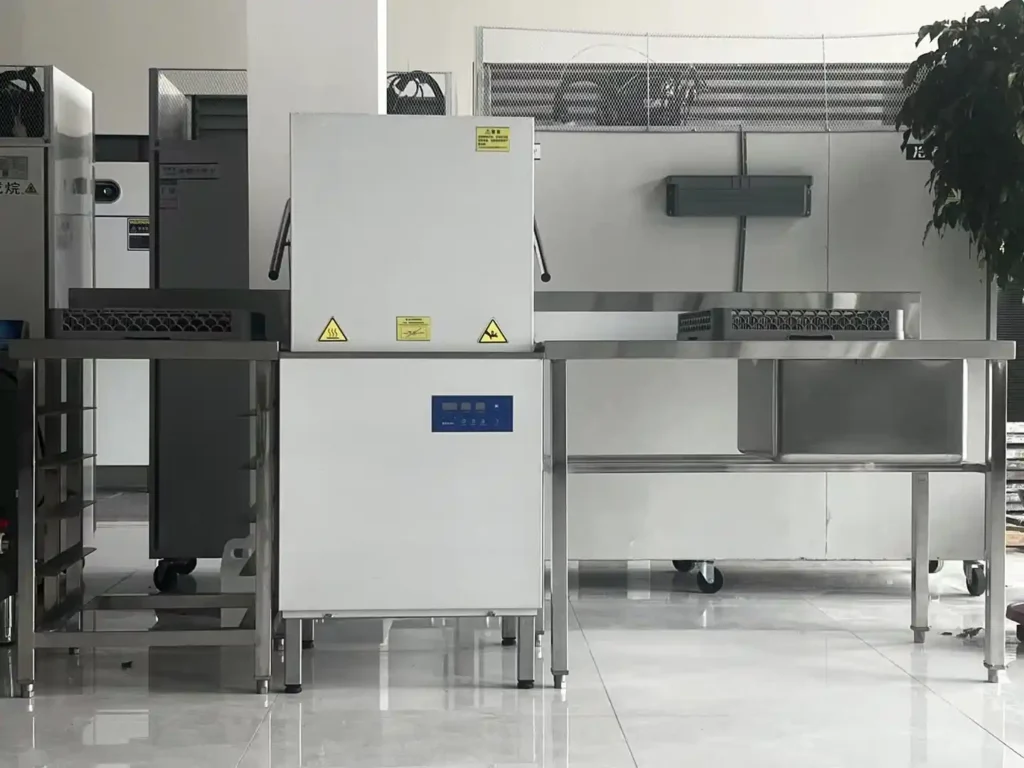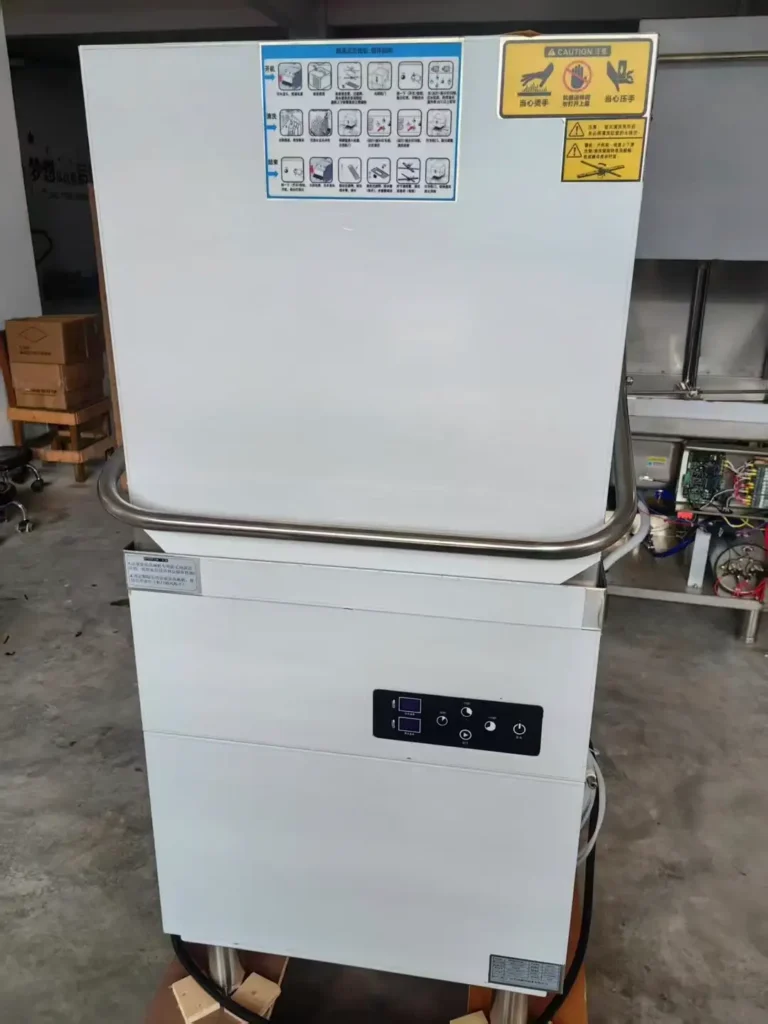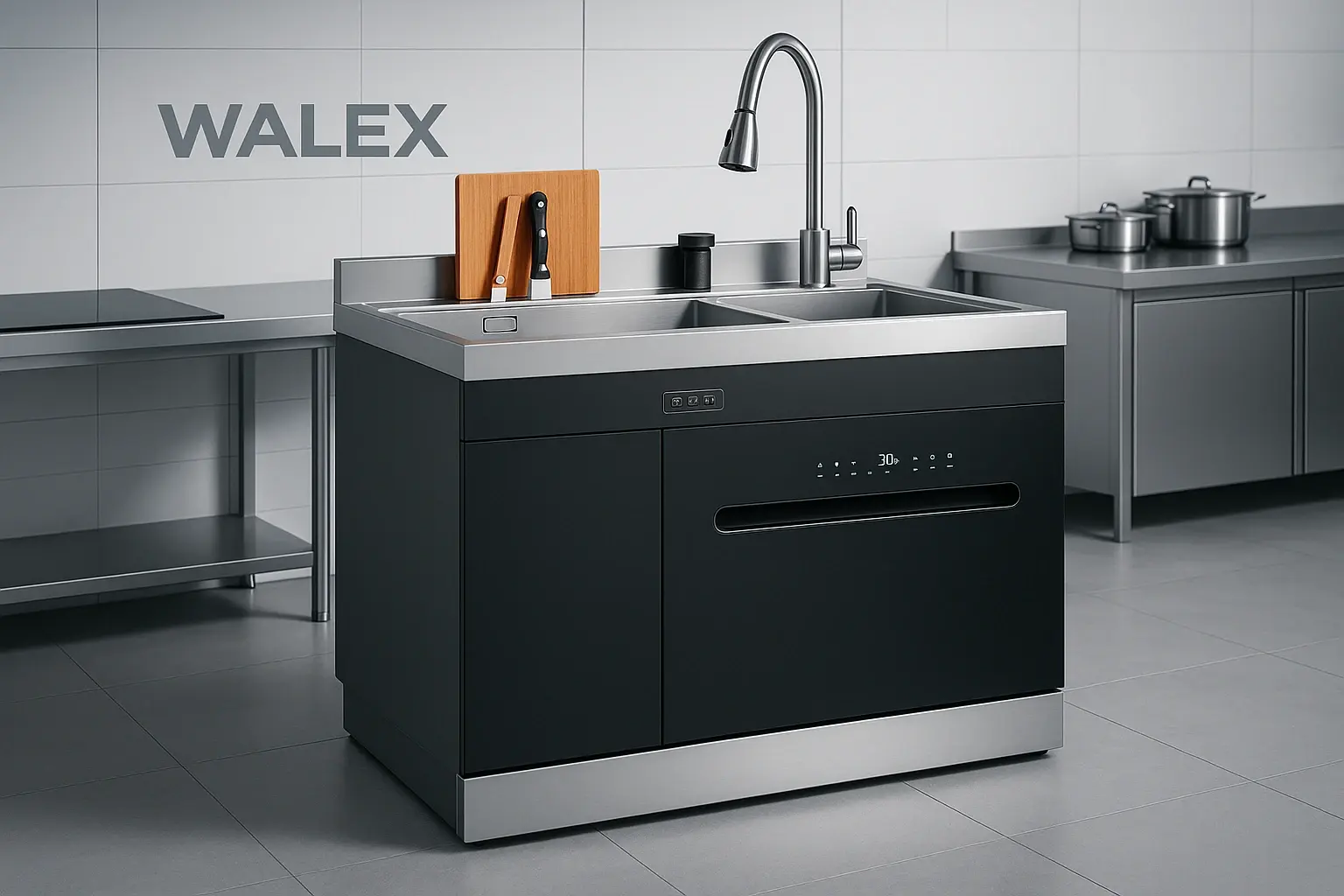Hood-Type Dishwasher Buying Guide
As the hood-type dishwasher market grows increasingly popular, many companies have rushed in. However, product quality and design vary widely. For consumers, it can be difficult to pick the right dishwasher from so many options. Today, we’ll delve into hood-type dishwashers to help you make a wise choice.

Market Confusion
Nowadays, hood-type dishwashers are becoming more widespread, and an increasing number of manufacturers are entering the field, leading to fierce market competition. Some companies, in an effort to attract customers quickly, cut production costs by lowering product quality. Although this low-price strategy might win them some market share in the short term, it causes many problems over the long run. Dishwashers assembled with cheap, inferior components frequently break down: motors burn out easily, spray arms clog often, and other malfunctions occur regularly. This not only forces users to contact after-sales service repeatedly—driving up maintenance costs—but also seriously disrupts daily usage. A machine meant to free your hands becomes a source of headaches.
Beyond product quality issues, there are hidden risks in the design itself. Many hood-type dishwashers on the market use a front-mounted glass window. At first glance, this design appears stylish and allows users to observe the washing process. In reality, installing a glass window requires cutting into the metal cabinet, which raises sealing concerns. During operation, the interior of a dishwasher is exposed to high-pressure spray and high-temperature steam. After prolonged, frequent use, the sealant around the glass window can age and deform due to heat, pressure, and thermal expansion and contraction. Once the seal fails, high-pressure water and steam can leak out, wetting the countertop and disrupting the kitchen environment. In severe cases, leaks can even damage internal electronics, greatly increasing the machine’s failure rate.
Design and Cost Differences
Hood-type dishwashers come in a variety of designs, each with its own material choices and cost structure. Models with glass windows typically use tempered glass panels framed by engineering-grade plastic, with food-grade silicone gaskets at the seal points. This approach allows customers to see inside while keeping initial production costs under control, making these units more affordable for small and midsize foodservice businesses. However, tempered glass and stainless steel expand at different rates under high temperatures. When operating continuously above 60 °C, the seal around the glass can deteriorate over time, compromising sealing performance and shortening the machine’s service life. As a result, users may face higher maintenance and replacement costs in the long term.

In contrast, WALEX’s fully enclosed all-stainless-steel models are made from a single sheet of 304 stainless steel, bent and welded to form a completely sealed structure. We chose 304 stainless steel because of its high-temperature resistance, corrosion resistance, and structural stability. However, 304 stainless steel costs 30 %–40 % more than the glass-panel approach, and tooling for large molds plus high-precision welding also adds expense. Therefore, these machines are more expensive upfront. Yet, they have an integrated structure without glass or gaskets that can fail easily, so maintenance costs over five to ten years are actually lower. For users who require long-term stability, the total cost advantage becomes clear.
Quality Control and Purchasing Choices
When it comes to material quality control, glass-window models and all-stainless-steel models focus on different factors. For glass-window machines, the key is ensuring the glass–cabinet seal is watertight, so each unit must pass thorough leak testing. Because their sealing structure is more complex and prone to leaks, testing performance in this area is especially important. For all-stainless-steel models, strict requirements apply to sheet thickness—typically 1.2 mm to 1.5 mm—and weld uniformity. Some manufacturers even use helium leak detectors to verify the airtightness of the fully enclosed cabinet. Both designs must meet national safety standards for commercial equipment, but their quality control methods differ because of the materials used.
From a purchasing standpoint, different customers gravitate toward different options. Buyers with tight budgets—such as small standalone eateries or fast-food restaurants—generally care more about initial investment. Glass-window models, with their higher cost-effectiveness, tend to sell well in these venues. On the other hand, chain restaurants and central kitchens, which pay attention to total life-cycle cost, prefer the initially pricier but more reliable all-stainless-steel models. This difference reflects each customer’s emphasis on “short-term purchase cost” versus “long-term operating cost.” As stainless steel raw material prices fluctuate and sealing technologies improve, the cost balance between these designs will shift, giving customers more flexibility in their choices.
Purchasing Suggestions
Hood-type dishwashers come in various designs, and each design and quality choice corresponds to particular user needs. When shopping, consumers should consider durability and maintenance costs to find the product that suits them best. If you prioritize appearance and want a stylish, innovative kitchen appliance, a model with a glass window might meet your aesthetic expectations and let you monitor the washing process. However, keep in mind potential sealing issues and ongoing maintenance costs.
If you place higher importance on product quality and durability—and want a machine that runs reliably for many years with minimal maintenance headaches—then a brand like WALEX, which focuses on refined design and strict quality control, is an ideal choice. WALEX dishwashers feature a fully enclosed 304 stainless-steel body with no cutouts, ensuring superior sealing and durability. Ultimately, whether you value appearance or durability, you can find an option that fits your needs. Just weigh your own priorities and make a selection accordingly.
WALEX Advantages
Unlike some products on the market, WALEX’s hood-type dishwashers stand out in both design and quality control. WALEX products use a fully enclosed 304 stainless-steel structure with no cutouts. This integrated design eliminates the sealing risks associated with glass openings, providing better overall sealing performance. 304 stainless steel is not only strong and durable—able to withstand high pressure and high temperatures inside the dishwasher—but also highly corrosion resistant, so it won’t rust even in humid environments. This ensures long-term stable operation.
In terms of quality, WALEX focuses on every detail. From raw material procurement to every step of the production process, we adhere strictly to high standards. Each machine undergoes multiple rounds of rigorous performance testing before leaving the factory to ensure top quality. As a result, WALEX dishwashers enjoy a long service life and a low failure rate under normal use, saving users from frequent repairs. When you buy a WALEX dishwasher, you can rest assured—you won’t have to worry about regular malfunctions disrupting your daily routine.
All WALEX dishwashers components are made of food-grade 304 stainless steel.

